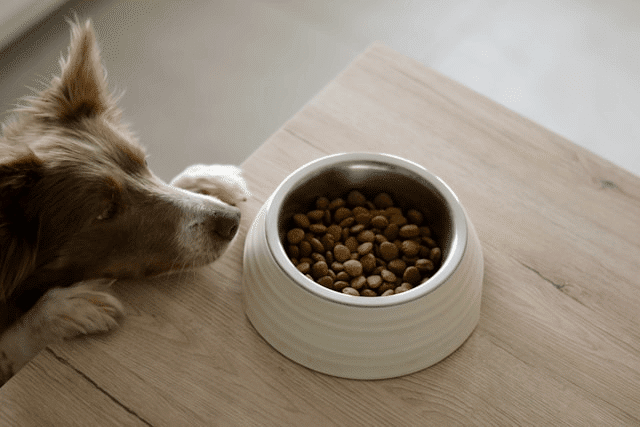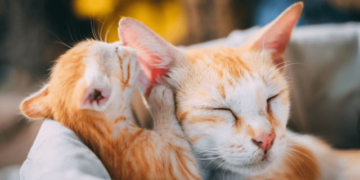Feeding your pet is one of the most important responsibilities of being a pet owner, but it’s not just about filling the food bowl whenever it’s empty. A consistent pets feeding schedule helps regulate digestion, maintain healthy weight, and even improve your pet’s behavior. Whether you have a playful puppy, a curious kitten, or a senior pet with special dietary needs, creating a structured feeding routine is essential for their well-being.
In this guide, we’ll cover why a feeding schedule matters, how to build one based on your pet’s needs, and provide sample schedules for dogs, cats, and small pets.
Why a Feeding Schedule Matters
Having a consistent feeding routine offers many benefits. Pets thrive on structure, and knowing when their next meal is coming reduces anxiety and prevents overeating. For dogs and cats, a scheduled routine supports better digestion and helps regulate energy levels throughout the day.
Another advantage of a pet feeding schedule is that it allows you to monitor eating habits. If your pet suddenly refuses food, you’ll notice right away making it easier to detect early signs of illness. Scheduled feeding also prevents obesity, since free-feeding (leaving food out all day) often leads to overeating.
Factors to Consider Before Creating a Feeding Schedule
Not every pet has the same needs. When designing a feeding plan, you should consider:
-
Pet type: Dogs, cats, rabbits, and other small animals all have different dietary requirements.
-
Age: Puppies and kittens need more frequent meals than adults, while senior pets may require specialized diets.
-
Health conditions: Pets with obesity, diabetes, or food allergies need carefully timed meals and portion control.
-
Activity level: Active dogs may need more energy-dense meals, while indoor cats may require fewer calories.
By factoring in these details, you can create a feeding routine that’s perfectly tailored to your pet.
Sample Feeding Schedules
Dog Feeding Schedule
-
Puppies (under 6 months): 3–4 meals per day. Puppies burn energy quickly and need frequent meals to support growth.
-
Adult dogs (1–7 years): 2 meals per day, usually morning and evening. This schedule balances energy levels and prevents overeating.
-
Senior dogs (7+ years): 2 smaller meals per day, possibly with specialized senior dog food for joint and digestive support.
Cat Feeding Schedule
-
Kittens (under 6 months): 3–4 meals daily to support rapid growth and high energy needs.
-
Adult cats: 2 meals per day. Cats are grazers by nature, but scheduled feedings help maintain weight and prevent digestive issues.
-
Senior cats: 2–3 smaller meals daily, especially if they have dental or health concerns.
Small Pet Feeding Schedule
-
Rabbits: Unlimited access to hay, with fresh vegetables once or twice a day, and a small portion of pellets.
-
Guinea pigs: Daily servings of hay, vitamin C-rich vegetables, and measured pellets.
-
Birds: Consistent feeding in the morning and evening, with a balanced mix of seeds, pellets, fruits, and vegetables.
Tips for Sticking to a Routine
Creating a feeding schedule is one thing, but sticking to it requires consistency. Here are some tips:
-
Use feeding timers or smart feeders if you have a busy schedule.
-
Measure portions carefully instead of free-pouring food.
-
Keep fresh water available at all times, no matter the pet.
-
Incorporate treats wisely—use them for training or special occasions, but avoid replacing meals with snacks.
By staying consistent, your pet will quickly adjust to the routine and thrive on the predictability.
Adjusting the Schedule Over Time
A good pets feeding schedule isn’t static it should evolve with your pet’s needs. Puppies and kittens will need fewer meals as they grow, while older pets may require dietary adjustments based on their health. Always consult with a veterinarian if your pet’s energy levels, weight, or appetite change, as these may signal the need for schedule modifications.
Common Mistakes to Avoid
Even well-meaning pet owners sometimes make mistakes when feeding their pets. Some of the most common errors include:
-
Feeding at inconsistent times, which confuses pets and disrupts digestion.
-
Relying too heavily on treats, which can lead to obesity and nutritional imbalances.
-
Not measuring portions, resulting in overfeeding or underfeeding.
-
Ignoring dietary changes recommended by a vet.
Avoiding these pitfalls will keep your pet healthy and ensure their feeding routine supports long-term wellness.
Conclusion
Creating a structured pets feeding schedule is one of the best things you can do for your furry friend’s health and happiness. By considering your pet’s type, age, and lifestyle, you can design a routine that supports their nutrition while making your life as a pet owner easier.









